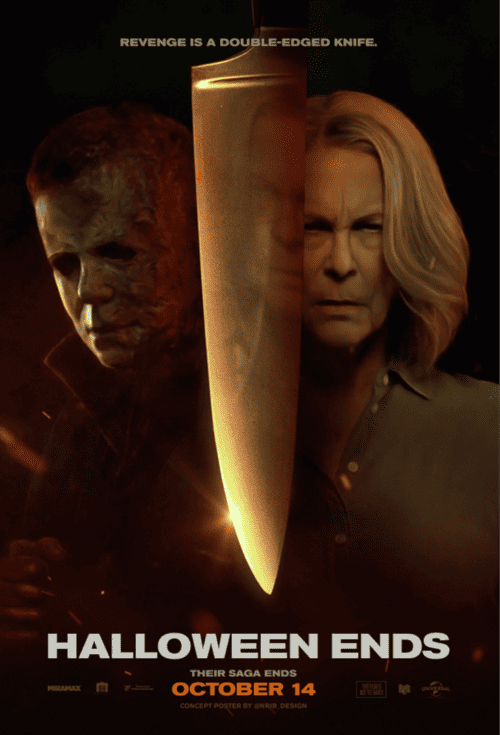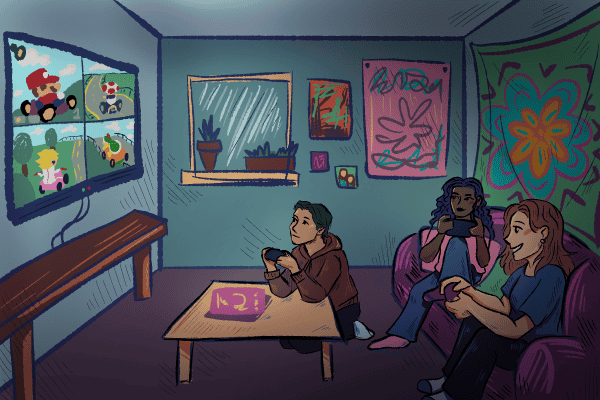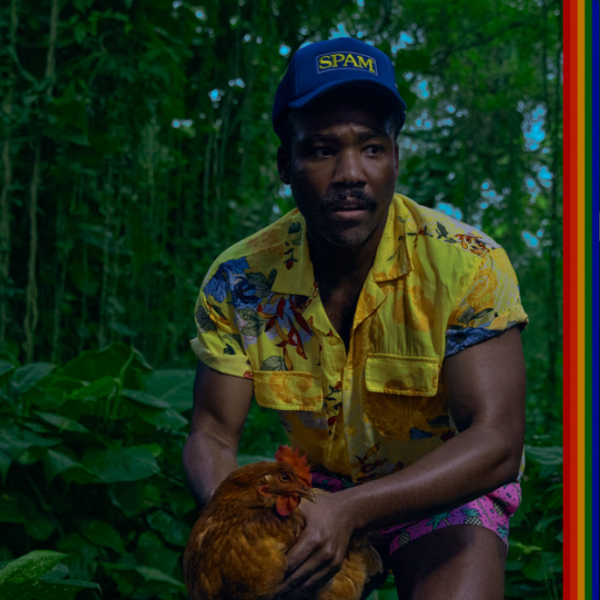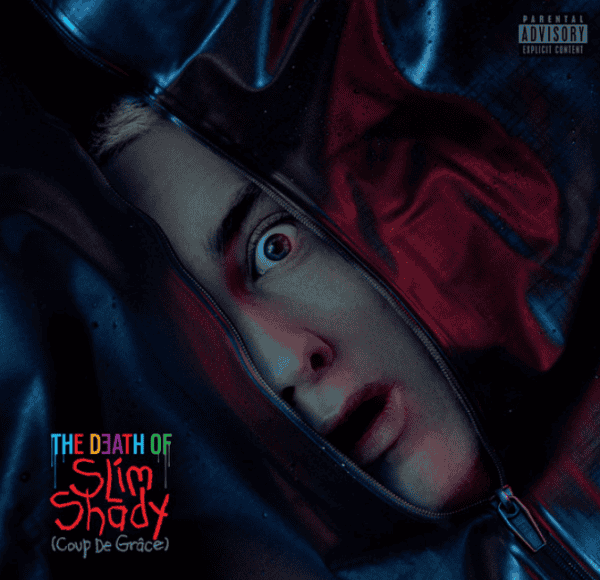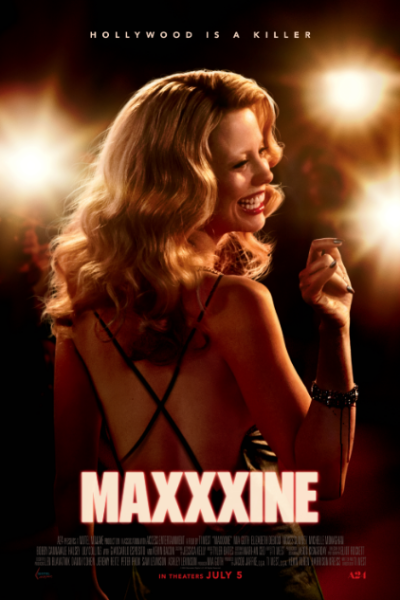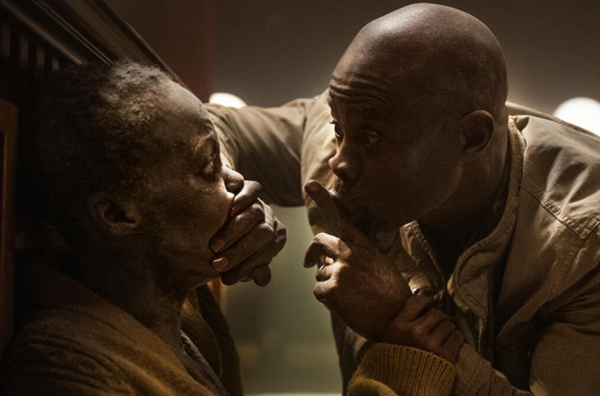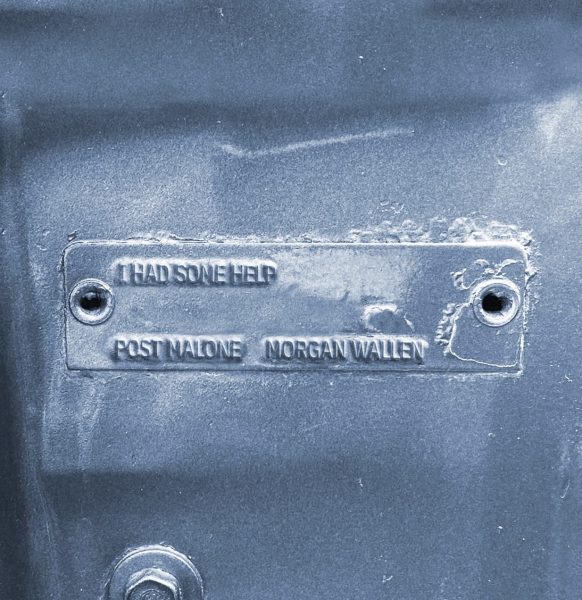Culture Pick: “Halloween Ends” is a fresh, underrated finale
October 30, 2022
“Halloween Ends” is the long-awaited finale to the rebooted “Halloween” movie franchise, which began with 2018’s “Halloween” and continued with last year’s “Halloween Kills.” It is a pleasantly surprising conclusion to director David Gordon Green’s trilogy that subverts expectations and goes deeper into the evil of Michael Myers and his haunting of the town of Haddonfield, Illinois.
The opening of the movie shows just how unique it is compared to every other “Halloween” movie: Michael Myers does not make an appearance. Rather, it features college-aged, dorky Corey Cunningham babysitting a young boy named Jeremy on Halloween night in 2019. A horrific accident sees Jeremy fall to his death from the top of the family’s three-story spiral staircase right as his parents arrive home, with Corey seemingly to blame.
From there, we fast forward to the present day, where Corey is a social outcast after avoiding manslaughter charges. He is seen in Haddonfield as the “psycho” who murdered Jeremy, an unfair view that has come as a product of the town’s increased paranoia since the resurfacing of Michael Myers four years prior. Corey faces scrutiny and bullying almost everywhere he goes and works a dead-end car repair job for his father.
We also reconnect with Jamie Lee Curtis as Laurie Strode and her granddaughter Allyson Nelson, portrayed by Andi Matichak. As two of the few survivors of the previous film’s ensemble, they have settled in a house together and are doing their best to live a normal life. This is a struggle for both, as Laurie is constantly chastised by the community for provoking Michael’s killing spree, and Alyson deals with immense survivor’s guilt.
While enduring yet another instance of mean-spirited bullying, this time from a group of high school seniors, Corey is rescued by an onlooking Laurie. The two characters meeting is the real starting point of the story.
In the incident, Corey sustains a cut on his hand. Laurie takes Corey to the hospital where Alyson is working as a nurse, and the two of them are immediately attracted to one another. A relationship develops, and they bond over their shared status as people who don’t fit in.
One night after the couple has an intense argument, Corey is walking home alone and is confronted once more by the same high schoolers. In a vicious moment, the leader of the group pushes Corey off a highway and to the ground below, where he lies unconscious until waking up in a nearby storm drain.
As he attempts to leave, he is suddenly grabbed from into a chokehold by none other than Michael Myers, making his first appearance, who sees the darkness deep within Corey and seems to activate it. This is the focus of the rest of the film: Corey’s descent into that darkness while under the influence of Myers.
The fact that Myers is not the sole villain makes “Halloween Ends” feel quite different from its predecessors. This was okay with the crew behind it as director David Gordon Green said in an interview with Collider, “I don’t think anyone’s gonna see it coming. They certainly wouldn’t expect us to make some of the choices we’ve made.”
The unique tone also fits with the overall trilogy, considering “Halloween Kills” was what Green described as a “chaotic art film middle chapter.” Combined, the three movies form a trio that features both excellent horror and rich, thought-provoking filmmaking.
It is also just a solidly made, entertaining seasonal flick. Each technical element flows together to create an atmosphere of intensity and spookiness, from the beautiful cinematography to the haunting score and well-choreographed action.
The film has unfortunately not received a warm reception. Critics and audiences alike seem to harbor disappointment over the different directions the story takes; on Rotten Tomatoes, the movie has a 39% official Tomatometer rating and a 57% audience score.
Linda Marric from The Jewish Chronicle sums up the general response to the uniqueness of “Halloween Ends,” saying, “we are left with a case of ‘let’s throw everything at the story but the kitchen sink and see what sticks.’”
Overall, while expectations were a bit all over the place, “Halloween Ends” is incredibly effective as a finale to this iteration of the Halloween series. It is fresh enough to differentiate itself from the abundance of Michael Meyers movies made over the past forty years while also keeping the traditional thrills and many of the characters audiences have come to love. If viewers can go in with an open mind and let themselves be wrapped in David Gordon Green’s heartfelt conclusion to his take on the famed “Halloween” series, they will be thoroughly satisfied.

